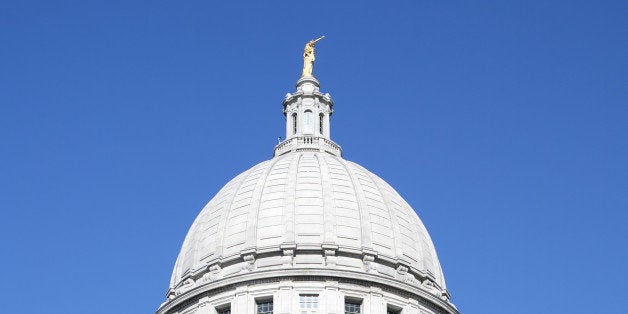
In November, the National Center for Policy Analysis (NCPA) issued a report on Wisconsin pensions and other post-employment benefits (OPEB). The latter includes all non-monetary benefits, but the lion's share is healthcare spending. While the NCPA study found much to praise in Wisconsin's pension system, it also called on the state to remedy its OPEB shortfalls.
The NCPA report cites the oft-repeated notion that Wisconsin's state pensions are 99.9 percent funded. At State Budget Solutions (SBS) we believe this figure is overly rosy. Using a fair market valuation, we conclude that Wisconsin's pension system is only 67 percent funded. Even by generous accounting standards, this rate is woefully inadequate. It should be acknowledged, however, that relative to other states, Wisconsin's funding level is markedly superior.
Unlike most states, Wisconsin pensions do not have automatic yearly increases, whether by edict or through cost of living adjustments (COLA). Most other states utilize these tools, leading to much larger shortfalls. Wisconsin, on the other hand, ties payouts to investment returns. Under this system not only are Wisconsin retirees not guaranteed increases, but if the state's investments underperform, payouts to retirees would fall accordingly.
Compared to other states, Wisconsin also demands more work hours from its employees in order to qualify for pension dollars. While this and other practices certainly have certainly improved Wisconsin's system relative to other states, its pension funds are still nowhere near what is considered solvent.
Beyond Wisconsin, there remains solid evidence that defined benefit systems in general mean greater strains on budgets than would defined contribution systems. Three of the four states with the worst pension debts per capita (California, New Jersey, and Pennsylvania) have no defined contribution option. The only defined contribution state on the list is West Virginia which has a history of severely underfunding their defined benefit system.
Another issue with Wisconsin's system is that, in an effort to reduce taxpayer expenses, which is admirable, they are taking on higher levels of investment risk. This would be fine if they accounted for the added risk in their accounting. Unfortunately they do not, which adds to the perception they are better funded than they truly are.
The NCPA's critique of Wisconsin's OPEB funding is far more persuasive. The accounting methods used by the state obscure the true level of OPEB obligations and significantly understate the real costs associated with providing healthcare and other benefits.
Like many states, Wisconsin chooses not to set aside any prefunding for their OPEB liabilities. Over time this only means higher yearly payments. Interestingly, the NCPA's analysis of Wisconsin's OPEB includes a critique of government accounting practices - a criticism that would equally apply to the state's estimate of its pension costs.
Bob Williams is president of State Budget Solutions, a national organization devoted to fiscal responsibility. SBS intern Aaron Gushin contributed to this blog.
